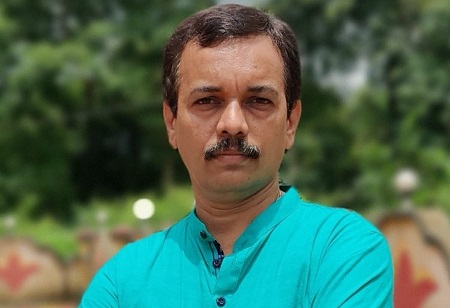
Mahendra Mahadik, Vice President (PPE Division), Kingfa Science and Technology (India) Ltd. in interaction with Industry Outlook magazine shares his view on how the PPE market is evolving in India and how is the PPE industry bringing in innovations in the domain, to promote safe usage.
The global personal protective equipment (PPE) market is projected to reach $110.85 billion by 2029. How do you see the market developing in India? What are the major driving factors propelling the growth?
Since India is a developing market, most of the international <b>PPE manufacturers</b> are targeting the Indian market. The major factors driving the growth of the market include the Population, Low operation cost, Supportive government policies – Make in India, implementation of IT in all segments, and Ease of doing business with a standardized Tax structure.
Counterfeiting of PPE products in India has risen "rapidly" in the last few years, with a 20 percent growth from January 2018 to December 2020, states a report by the Authentication Solution Providers' Association (ASPA). How is the PPE industry battling the Counterfeiting issue? How do you propose to solve this problem?
In the case of PPE products manufactured in India counterfeiting is not much. The requirement for PPE is not so high. Hence, counterfeiting is possible only in case the demand is very high and the supply is very low. There is awareness among the users for use of PPE. Counterfeiting happened during the pandemic for respiratory products since the demand was very high and there was no supply of the products.
According to the Central Pollution Control Board (CPCB), India produced 45,308 tons of PPE waste between June 2020 and May 10, 2021. Tell us how is the PPE industry approaching in solving this issue and unleashing the potential of a circular economy?
Normally in Industries a huge amount of waste is not generated from PPE. This waste was generated due to the high use of PPE kits during the Covid-19 pandemic. We will have to find environmentally friendly Raw materials for manufacturing PPE.
For example, in the case of a disposable respirator, a reusable respirator with a reusable cartridge filter can be used. Thus, avoiding excessive use of the disposable respirator. We will have to find an alternative against the use of Plastic as well.
As PPE kits are now widely used in critical industries such as food processing, oil & gas, and construction, identifying the replacement period of the products is important. How is the industry bringing in innovations in this domain, to promote safe usage?
Automation is the only option to avoid the excessive use of PPE kits. Most of the food processing industries have implemented automation thus, avoiding human touch and also use of PPE kits. Therefore, Automation has to be implemented in other industrial segments as well.
With an increase in the number of PPE kit manufacturers, the assurance of the quality of PPE kits is largely threatened. How is the industry reaction to this problem?
There is a massive increase in PPE kit demand recently because of Covid. To cater to the demands there was a rise in PPE kit manufacturers and other related products. With the increase in sudden demand and opportunistic manufacturing setups, the quality of any product is likely to be degraded. Now owing to a decrease in demand and competition among the manufacturers the users opt for quality products.
How do you see the future of the PPE industry in India?
Population plays an important role in increasing demand for PPE. With the increasing awareness and education in society, the use of PPE has increased. It is an important part of protective armor for frontline workers. The important aspect behind India’s growth is the strong manufacturing sector of the country. It is considered the backbone of development in general and economic development. India has emerged as the second most sought-after manufacturing destination in the world.
We use cookies to ensure you get the best experience on our website. Read more...